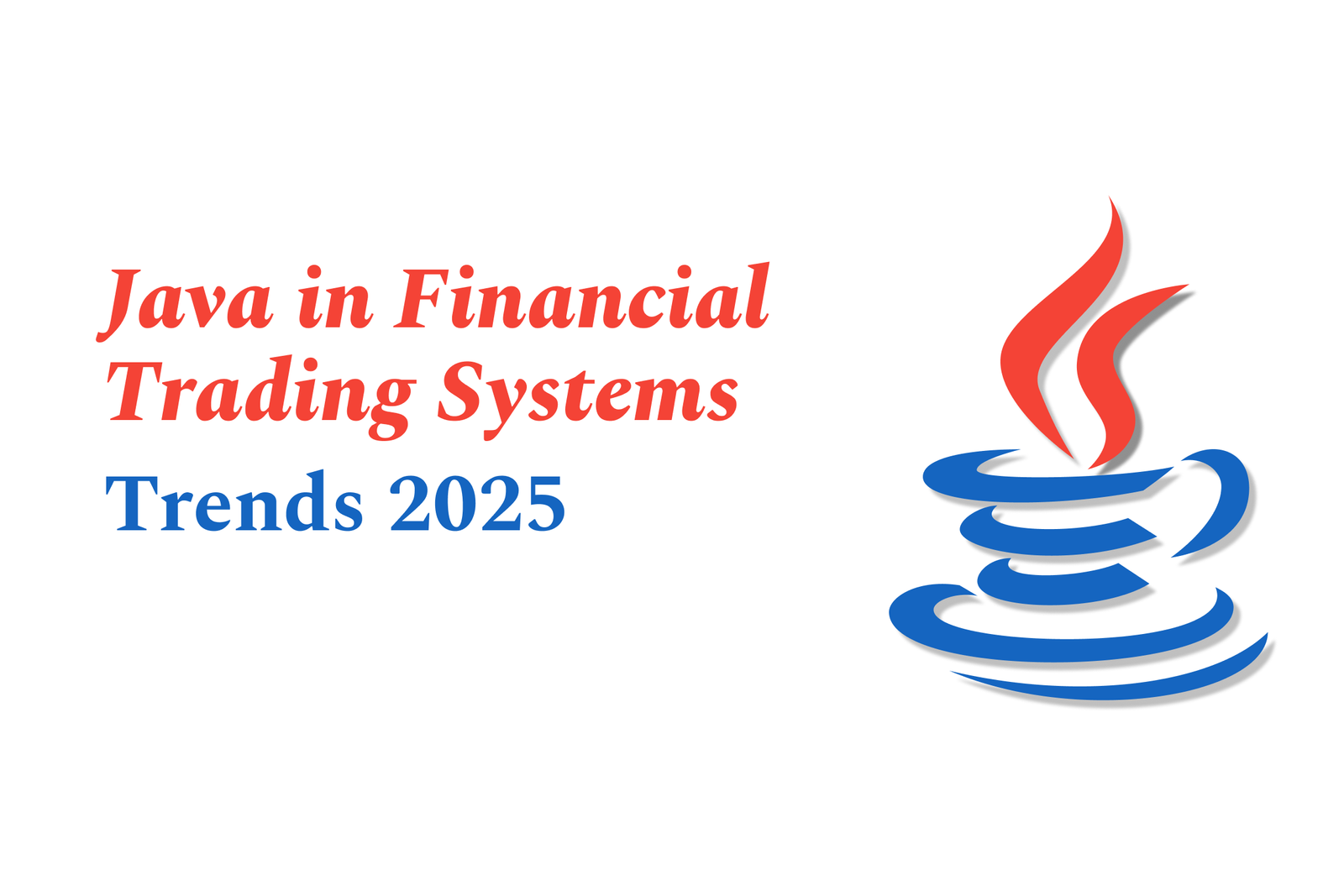Java in Financial Trading Systems: Trends 2025
Java remains vital in financial trading systems in 2025, powering low-latency, secure, and scalable platforms. Its integration with cloud-native architectures, microservices, and AI-driven analytics drives innovation, ensuring efficient, real-time trading across global markets.
Java in Financial Trading Systems: Trends 2025
1 ) Enduring Popularity of Java in Financial Trading
Java remains a cornerstone technology in financial trading systems due to its combination of speed, scalability, and security.
Its robustness supports mission critical trading platforms demanding low latency and high reliability.
Financial institutions favor Java for its mature ecosystem, rich libraries, and strong community support.
2 ) Reasons for Java’s Dominance in Fintech and Banking
Java provides fast execution and high throughput processing, which is essential for handling real time financial data and transactions.
The language’s security features and strict type system help meet stringent regulatory and compliance requirements.
Platform independence (write once, run anywhere) allows flexible deployment across various trading infrastructure environments.
The availability of high performance Java Virtual Machines (JVMs), such as Azul Zing, enhances responsiveness and minimizes operational costs.
3 ) Integration with Modern Technologies
Java remains compatible with emerging trends like cloud computing, big data analytics, and AI driven algorithms essential for algorithmic trading.
Developers often combine Java with Python for quantitative finance, using Java for system backbone and Python for data science and prototyping.
4 ) Focus on Execution Efficiency and Code Optimization
Algorithmic trading success heavily depends on efficient code that reduces latency and optimizes data handling.
Java’s mature toolsets enable developers to build scalable, reliable, and maintainable financial applications.
Best practices include leveraging Java’s concurrency models and optimized libraries for market data feed processing and risk management.
5 ) Future Trends: Emphasis on Cloud Native and Microservices
Financial systems are migrating to cloud native architectures where Java microservices manage modular, scalable trading components.
Continuous integration and deployment pipelines improve development agility while maintaining Java’s performance advantages.
Java frameworks are evolving to better support distributed computing and container orchestration, crucial for next generation trading solutions.
6 ) Conclusion
Java’s blend of reliability, speed, security, and ecosystem support ensures its ongoing prominence in financial trading into 2025 and beyond.
Financial institutions continue to invest in Java based infrastructure to meet the demands of automated, real time trading in complex global markets.
https://justacademy.in/news-detail/react-native-for-startups:-a-smart-choice
https://justacademy.in/news-detail/ios-19-sirikit-updates:-new-voice-interaction-apis
https://justacademy.in/news-detail/java-in-ai-powered-fraud-detection-systems
https://justacademy.in/news-detail/flutter-code-coverage-tools
https://justacademy.in/news-detail/dart-3.2:-what’s-new-for-flutter-devs
Related Posts
In 2025, top Angular libraries offer modern, feature-rich components and tools for building dynamic web apps. From powerful data grids to low-code platforms like UI Bakery, these libraries enhance development speed, UI design, and scalability, making them essential for Angular developers.
Migrating from AngularJS to Angular 17 involves gradually upgrading your app by running both frameworks together using tools like ngUpgrade, rewriting components in TypeScript, and adopting Angular’s modern architecture to enhance performance, maintainability, and long-term support.
Angular state management tools help organize and handle app data efficiently, improving scalability and maintainability. Popular options include NgRx for robust, RxJS-based patterns, and newer Signal Store solutions that offer simpler, reactive approaches integrated tightly with Angular’s latest features.
RxJS in Angular empowers developers to manage asynchronous data streams with powerful operators like `forkJoin`, `combineLatest`, and `zip`. Mastering these key operators in 2025 is essential for building efficient, reactive applications that handle complex event sequences seamlessly.
Angular performance optimization in 2025 focuses on improving app speed and responsiveness by using techniques like OnPush change detection, lazy loading, efficient data caching, and AOT compilation. These practices reduce load times, enhance user experience, and ensure scalable, fast Angular applications.
In 2025, Angular remains preferred for large-scale, enterprise apps with its robust, all-in-one framework, while Vue attracts developers seeking simplicity and fast development for smaller projects. Both frameworks excel, with choice driven by project needs and team expertise.
Angular Signals are a new reactive primitive in Angular 16 that enable fine-grained, efficient change detection by automatically tracking dependencies and updating only affected parts of the UI. They simplify state management and boost app performance, revolutionizing Angular's reactivity model.
Angular interview questions to prepare in 2025 focus on core concepts like components, directives, data binding, routing, and dependency injection, along with TypeScript mastery and latest Angular features to ensure strong practical knowledge for building scalable, efficient web applications.
AngularJS reached its official end of support in January 2022, meaning no further updates or security patches. To ensure app security and performance, developers should consider migrating to modern Angular versions or seek third-party long-term support options if immediate migration isn’t possible.
The Angular Roadmap 2025 highlights upcoming features focused on improving developer experience and performance, including zoneless Angular, Signals integration, enhanced Forms, async data handling, improved HMR, and expanded Angular Material/CDK enhancements, driving modern, efficient web app development.










